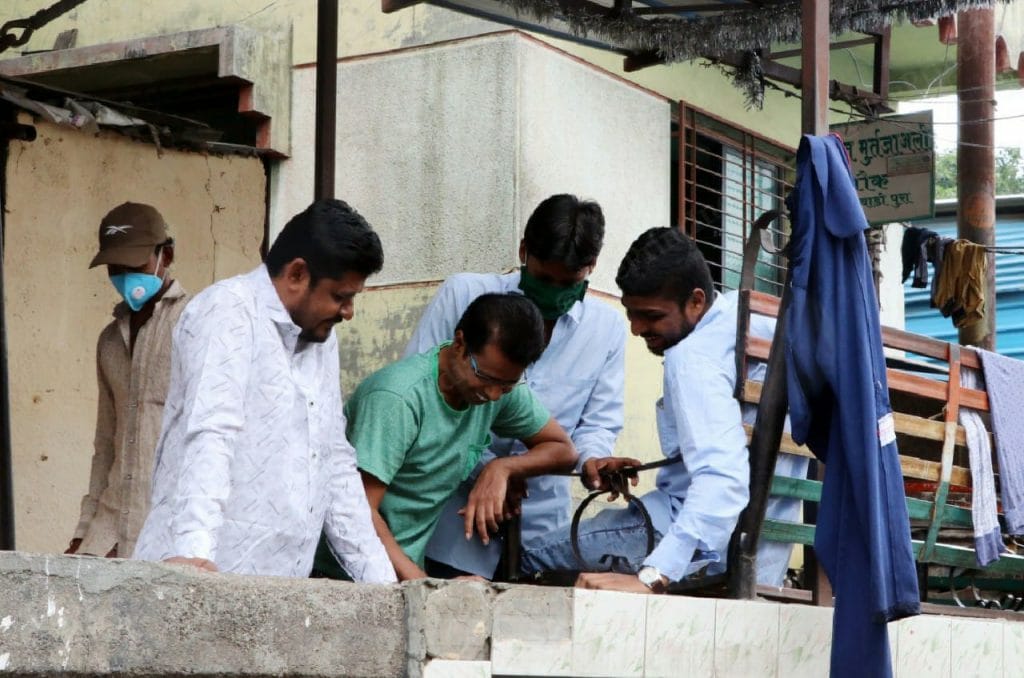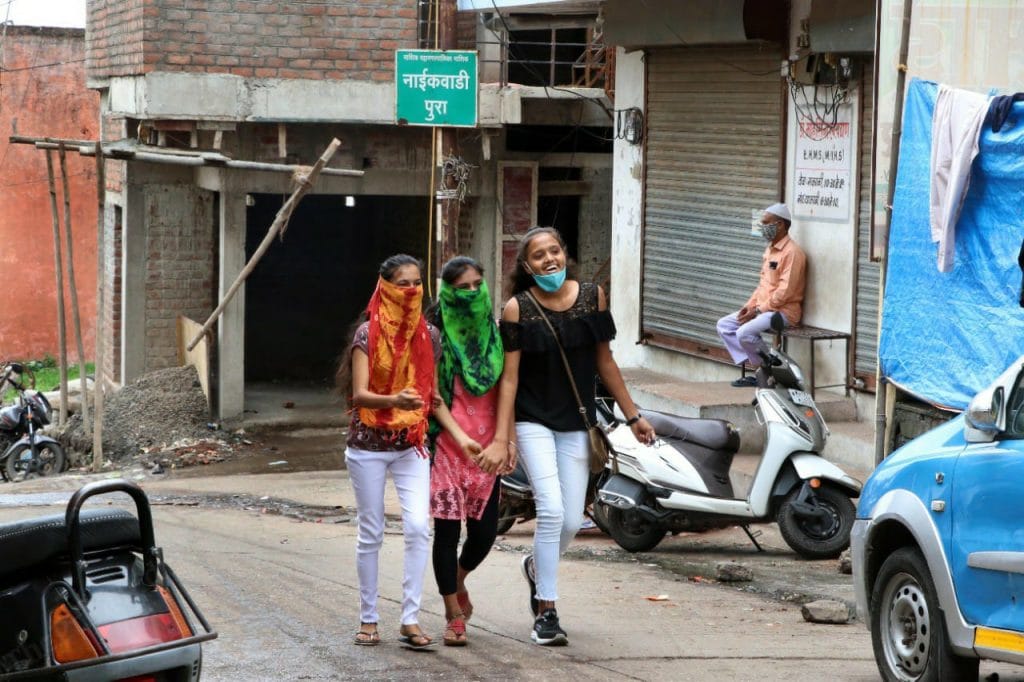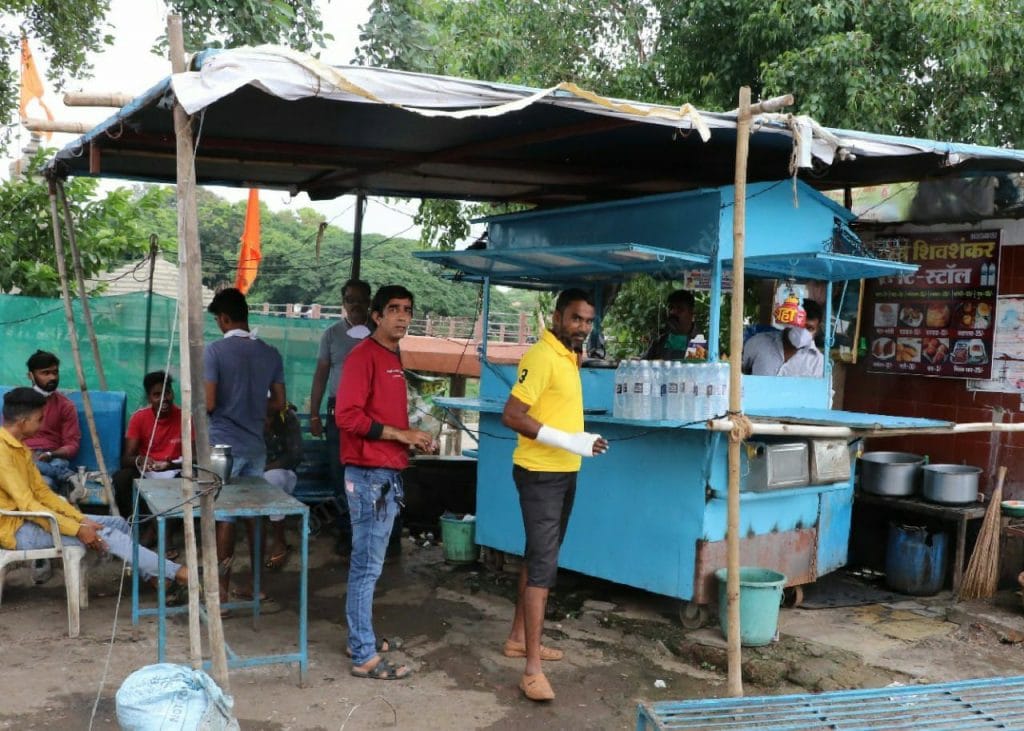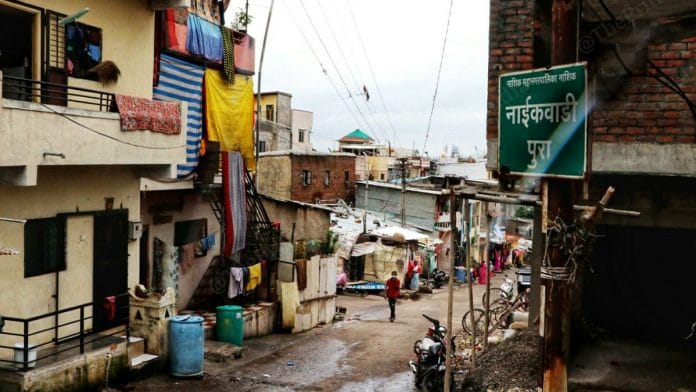Nashik: With narrow alleys dotted with one room tenements, filthy community toilets, choked drains, no social distancing and children without masks — the Naikwadi Pura area, which has reported 30 per cent of the total Covid-19 deaths in Nashik, seems entirely oblivious to the virus.
Maharashtra’s Nashik district has so far reported 202 deaths due to Covid-19, and 70 of these were from Naikwadi Pura that covers an area of just 3 km.
The area has also recorded the most number of active cases of coronavirus, making it a formidable challenge for civic authorities.
Nashik Municipal Corporation Commissioner Radhakrishna Game blames the high death rate in the area on people refusing to report Covid cases early and the overall stigma attached to the virus.
“The area which falls under old Nashik, has certainly emerged as a challenge for us as maximum deaths and active cases are from this area. The main reason for this is that they are all coming to hospitals very late. There is still a stigma attached to the virus and even when people get symptoms, they try to cure themselves at home, which proves disastrous,” he said.
“In most cases here, we saw that the patient did not report the symptoms and in fact kept taking home remedies or Yunani, till the situation got worse and turned to the hospital only after they started experiencing severe breathlessness,” he added.
Most patients from this area, Game said, needed ventilators and could not survive because they came to the hospital at the last possible minute.
According to statistics from the Nashik Municipal Corporation, of the total 5,444 cases in Nashik (till 19 July) — 1,167 cases were reported from Naikwadi Pura. Moreover, out of these, 384 patients are serious and hospitalised while 70 have died.
“We started an awareness drive in the area to make the locals understand that they must report anyone who has symptoms to the hospital or to the helpline. But the area continues to remain a challenge,” Game said.
Nashik, with a population of 20 lakh, has 295 Covid containment zones that includes 272 buildings and 23 slums.

Also read: Train to Bangladesh comes to the rescue of onion hub Nashik after Covid disrupts business
Shoddy survey, filthy toilets: Reality far from claims
According to Game, several teams have been formed by the local administration to disinfect, clean and survey the area to arrest the transmission.
“Dirty community toilets became a major reasons for the spread so we deputed teams to ensure that there is a two hourly cleaning and disinfectant sprayed 4-5 times a day. Moreover, we put 400 teams on the ground to do house-to-house surveys in these areas—take an oximeter test, do a thermal scanning of each and every resident and maintain a record,” Game said.
However, the situation on the ground was a far cry from these claims.
According to the residents at Naikwadi Pura, even though a team from the corporation came to note down their names, no oximeter test or thermal scanning was carried out.
“They picked a few houses in each lane and did that thermal test with the temperature gun. For the rest, they just took down names and went,” said 13-year-old Jai Harish Shirsat, a local resident.
Sixty five-year-old Vimal Desai confirmed this. “No one came for any test or taking the temperature. Just noted down our names.”
Furthermore, while Game claimed the toilets were being cleaned on a two-hourly basis, ThePrint found them in filthy conditions.
“The toilet is so filthy that you can’t imagine. The drains are choked, the dirt is overflowing. We complained about this to the corporation five days ago but no one has come till now. So, people now sit at the boundary or at the compound of the toilet every morning,” local resident Sheetal Akshi Poreti told ThePrint.
Some other local residents claimed that the corporation had sprayed disinfectant each time a new Covid-19 case emerged.
“They come and spray medicine regularly and ask us to remain indoors,” said 70-year-old Mohammad Ismail.
The civic authorities have also cordoned off lanes where a significant number of Covid-19 cases had emerged and have also put banners outside their homes.
Sitting at the door of her house, 65-year-old Vimal Devre, a Covid-positive patient, said she was asked to remain indoors and constantly receives calls from the state health department.
“I receive calls from the government department for an update on my health. I started with some fever, but was not given any medicine. When I asked about the treatment, they said my fever will go down and I will have to remain inside my home till then,” she said.

Also read: Wine prices could rise as Nashik industry looks to get going after lockdown
Better climate, less cases brought people and Covid to Nashik
According to civic authorities, the cases in Nashik began from “high profile areas”, by people who had a history of travelling abroad.
Furthermore, many people from the Gujarati and Parsi community, who are settled in Mumbai, have been relocating to their properties in Nashik as the coronavirus situation here is much better than Mumbai, which crossed the 1 lakh cases mark Saturday.
The authorities noted that this was one of the major reason for the surge in infections.
“Nashik has a better climate than Mumbai and the cases in Mumbai were surging. So most people from the Gujrati and Parsi community who also have houses here started to return. Some also brought the virus along,” Game said.
Another reason for the surge was the supply of essential goods to mandis. Several truck drivers and workers, who travelled from different parts of the country to Nashik, brought the virus with them.
From the mandis the virus spread to the slums, civic authorities explained.
“We studied the pattern and found that these truck drivers and workers coming from outside getting essential supplies first infected the traders and workers in the mandis here in Nashik. From the mandis, the infection then spread to the slums, which are just adjacent to the mandis. Moreover, many people used to visit the mandis for essential supplies, which made the situation worse,” Game said.
“Till 19 May, cases were under control but as the lockdown was eased people started moving around and the virus spread,” he added.

Also read: There’s a price war to hire doctors & nurses in Mumbai’s Covid-hit satellite cities
Doubling and death rate a major concern
The surge in Covid-19 cases was also because of more testing, noted local authorities.
Nashik has conducted 12,000 tests per million and have also procured 13,410 antigen test kits.
“We are not afraid of cases rising. That is happening because we are testing more. It is good for us that more and more positive cases are being identified and given medical attention, which will be beneficial in the long run. In fact we are now going to start testing 600 people a day,” Game said.
However, the doubling and death rate in the area is a grave concern and needs to be brought under control.
“We are concerned about the doubling rate, which is 13 days. We also need to bring down the number of deaths and which is why we are now working to identify patients with co-morbidities and are giving them extra attention and care,” a senior official said.
Game also claimed that even though Nashik has enough infrastructure to take the load, they are working on ramping it up further and are also making recruitments.
“Till now, we have enough infrastructure including oxygen beds to accommodate people. We are also recruiting more staff including doctors and nurses to deal with future load,” Game said.
Also read: They vowed never to return. But no savings, no jobs & debt force migrants back to Mumbai






